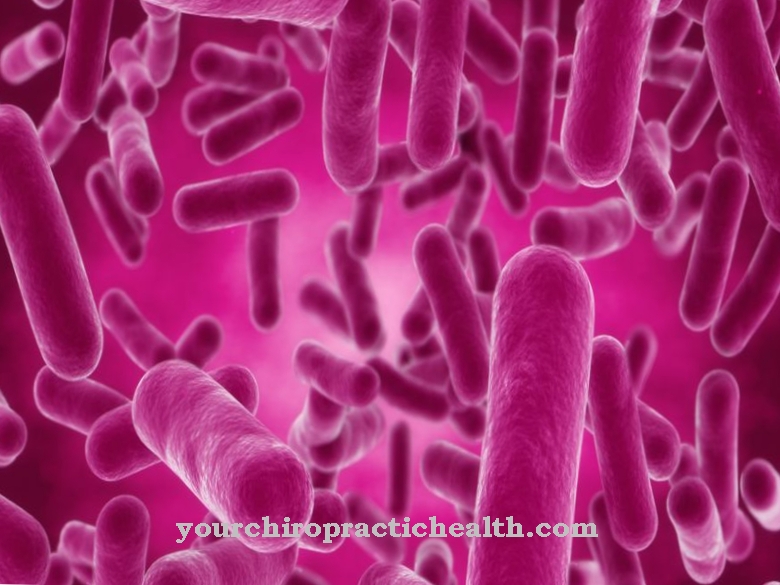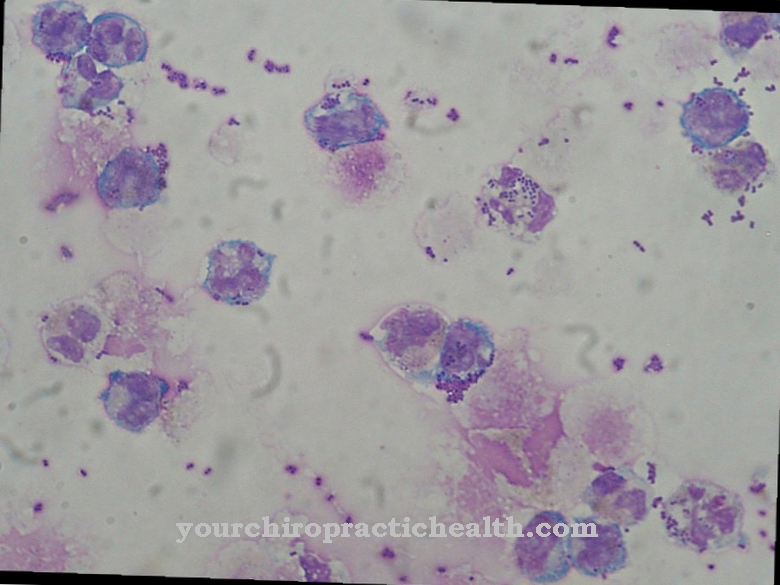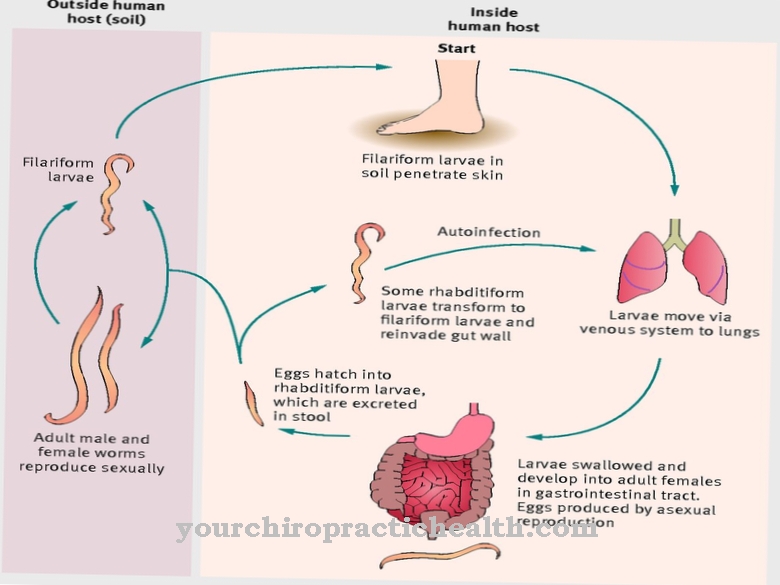Veillonella parvula is a species of bacteria assigned to the Acidaminococcaceae. The species normally lives as commesals in the human oral flora and in the intestines. Especially with an immune deficit, the species can become an opportunistic pathogen.
What is Veillonella parvula?
Veillonella are named after the French bacteriologist Adrien Veillon. It is a genus of the Acidaminococcaceae, which was previously also known as Veillonellaceae. The bacterial genus is part of the physiological oral flora and causes dental caries under certain circumstances. Veillonella are also found in the intestinal and vaginal flora. Bacteria of the genus continue to live in the rumen of ruminants, where they enable lactic acid to convert into acetate and propionate in a rumen symbiosis.
All species of the genus are obligately anaerobic bacteria with gram-negative staining behavior that occur in the form of cocci. They are known for their ability to ferment lactate. Veillonella parvula are a species of the genus Veillonella, which under certain conditions is associated as a human pathogen and can thus be described as an opportunistic pathogen. For example, bacteria of the species have been isolated from patients with endocarditis, periodontitis, meningitis, or osteomyelitis. Some cases of sepsis have also become known in connection with the type of bacteria.
The bacterial strains of the species have no active ability to move and occur mainly in a chain arrangement. Their size is about 0.4 micrometers. The strains of the species have an outer shell made of lipopolysaccharides, which is interpreted as the virulence factor of the bacterial species.
Occurrence, Distribution & Properties
The species Veillonella parvula does not form spores and occurs as commensals in the human intestine and in the plaque of the oral flora. The bacterial species cannot live without putrescine and cadaverine, as they are important components of the species' own peptidoglycan. Plasmalogens and ether phospholipids also make up the species that help regulate membrane fluidity.
Unlike other bacteria, bacteria of the species Veillonella parvula do not metabolize carbohydrates, but use organic acids such as lactate to generate energy. Since bacteria of this species cannot ferment carbohydrates, the conversion of lactate into vinyl propionate and vinyl acetate is their main source of energy.
The bacteria do not have hexokinase, but do have the enzyme methylmalonyl-CoA decarboxylase. This enables the bacteria to metabolize succinate in the presence of lactate. They use the resulting free energy to operate their sodium ion pumps.
The organisms live strictly anaerobically. So they do not need elemental oxygen to survive and grow, but are even inhibited in their growth by the presence of oxygen. They often live in a mutually beneficial relationship with other microorganisms, for example with the bacteria of the natural oral flora. The metabolic processes of the various oral bacteria are precisely coordinated so that the presence of one species favors the presence of the other.
In many cases human pathogenic bacteria exploit the presence of Veillonella parvula for themselves and use the species as their personal virulence factor.
Basically, the bacterial species Veillonella parvula is considered a commensal that neither harms the human organism nor directly uses it. However, since strains of the bacterium have also been isolated from patients with infections such as endocarditis, periodontal disease, meningitis and osteim myelitis, there is sometimes talk of opportunistic pathogens that exploit a weakened immune system and thus infections under certain circumstances can favor.
You can find your medication here
➔ Medicines against vomiting and nauseaIllnesses & ailments
In meningitis, the pia mater and arachnoid mater in the area of the brain become inflamed. This phenomenon can be caused by bacteria such as the species Veillonella parvula. Bacterial meningitis is divided into a purulent and a non-purulent form and causes symptoms such as general signs of infection with fever, fatigue and headache. These symptoms are associated with nausea, vomiting, back pain, a stiff neck and opisthotonus. In addition, disturbances of consciousness often arise, which can be accompanied by disorientation or loss of reality and apathy up to coma. Cramps, photophobia and skin changes are typical symptoms of the potentially life-threatening disease.
Osteomyelitis associated with the bacterial genus is also an acute or chronic inflammation, which in this case affects the bone and often spreads to the bone marrow. Osteomyelitis often occurs after an operation and is then usually caused by hospital germs. Osteomyelitis caused by the pathogen Veillonella parvula is an endogenous infection, as the bacteria of this species originate from their own body. In periodontal disease, the type of bacteria causes inflammation of the periodontium. Often the primary focus of infection in osteomyelitis or meningitis by the pathogen Veillonella parvula corresponds to a focus of infection in the mouth area, from which the bacteria spread to the target organs.
In addition to the bones and the brain, the heart can also be affected by the infection, for example in the case of endocarditis or inflammation of the lining of the heart. Sepsis (blood poisoning) after infection with Veillonella parvula has been reported in rare cases. In sepsis, the bacteria are in the blood and cause a systemic inflammatory reaction in the entire organism. Immune-healthy patients are less susceptible to such blood poisoning because their immune system renders bacteria in the blood harmless within a very short time so that they do not spread any further. Illnesses, old age and drug therapies with, for example, cytostatics can weaken the immune system and thus promote sepsis.

















.jpg)



.jpg)

.jpg)




